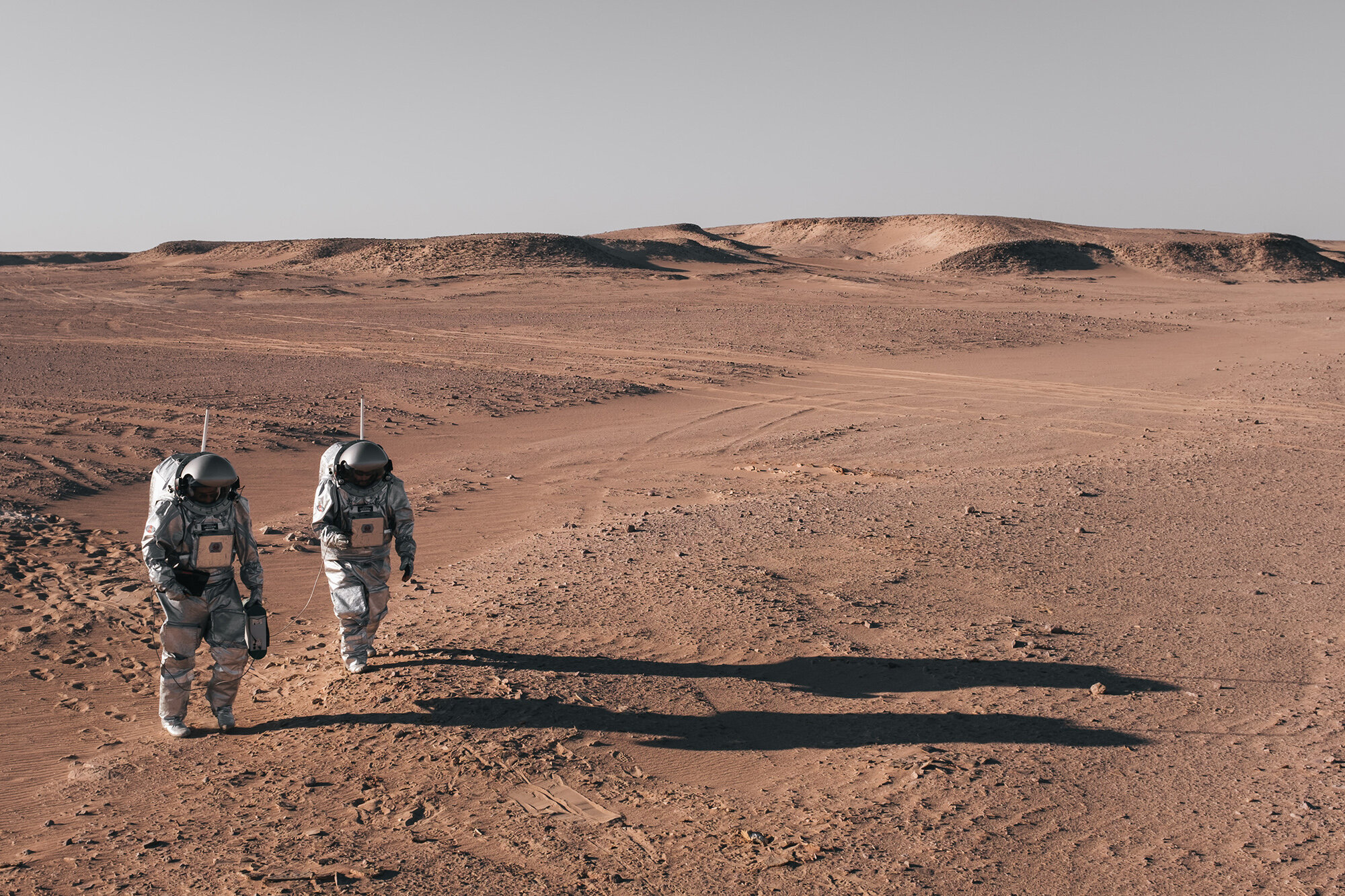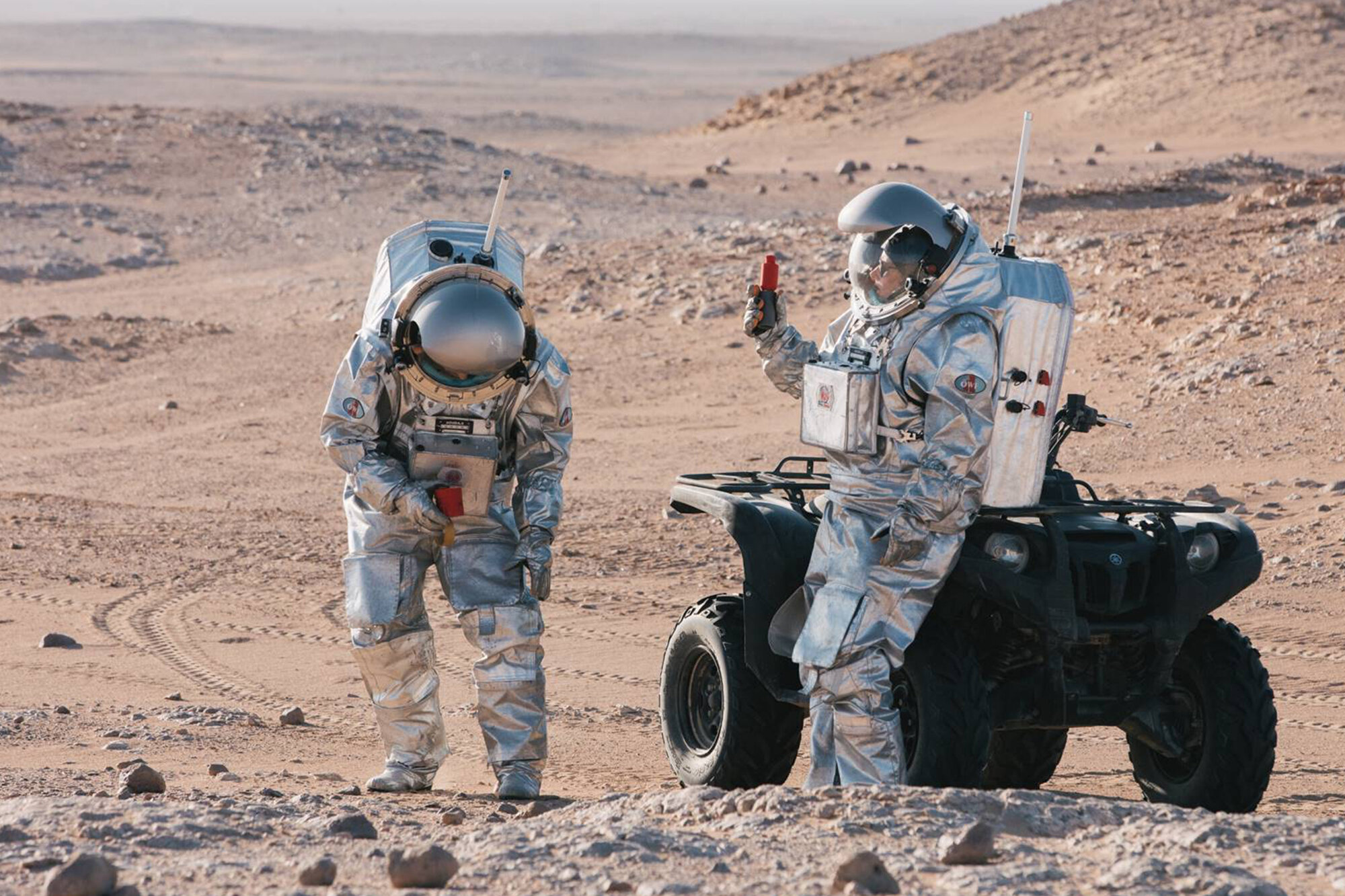'5+1' with analog astronaut Dr. Carmen Koehler
In our latest edition of ‘5+1’ we spoke to analog astronaut Dr. Carmen Koehler. She shares with us what it means to be an analog astronaut, since when she knows she wants to work in the space industry, her craziest experience, the gender distribution in space travel and her absolute dream.
1. You are an analog astronaut. What does that mean exactly?
What is the best way to prepare for something? I think that it is to simulate it under realistic conditions. As analog astronauts we do exactly that. We simulate space missions here on earth in regions that are similar or analogous to the Moon or Mars. I am an Analog Astronaut for the Austrian Space Forum (OEWF) and at Astroland where we simulate Mars missions in regions on earth that are similar to Mars. I feel fortunate that I was selected in 2015 as the OEWF’s first female analog astronaut. After the selection, we were trained on weekends for about six months until the analog astronaut class of 2015 participated in our first Mars simulation mission on a glacier ‘AMADEE-15’. That was very exciting. Since then I have been on two further missions – one being the first mission from Astroland, held in the 50th anniversary of the Moon landing and another mission named ‘AMADEE-20’ is planned for autumn in the Negev desert of Israel. This time, I hold a double role as an analog astronaut backup and as the On-Site Support Commander, the team in charge of preparing and maintaining "Mars" for the mission. This commander role is definitely a new challenge and teaches me a lot about conducting analog missions. I should probably also note here that I do this in my free time.
2. Have you known since you were a kid that you wanted to be an astronaut? When did your love for space begin?
When I was a kid, I grew up in Berlin with the Berlin wall. Going to space when you could not even simply visit your family on the other side of the city seemed so far away. Nevertheless, space and the universe always fascinated me. My mom was a housewife and when I got home from school, we often watched Star Trek and MacGyver together. For me an astronaut somehow is MacGyver on the enterprise and I wanted to be there with him. In order to become an astronaut there is no clear path and especially no guarantee that you will actually get the job. In Germany, the last call for astronauts from the European Space Agency (ESA) was 2008. At that time I was too young and unexperienced. There have been none since.
Thus the main thing when being an astronaut is your dream is to pursue it. Always be ready and enjoy the ride. I love the saying “Shoot for the moon. Even if you miss, you'll land among the stars”, by Norman Vincent Peale. And I would love to be among the Moon and the stars.
3. What is the craziest thing you have experienced as an analog astronaut?
In 2018 I was on a Mars simulation mission in the desert of Oman for a month. This was the AMADEE18 mission of the OEWF. As an analog astronaut, we get to wear a space suit simulator and conduct scientific experiments in the Mars-like regions. The space suit weighs about 50 kg and it takes about two hours to put on. During these two hours you put on the three different layers consisting of the thermal underwear, the exoskeleton to simulate a pressurised suit, which make the movement a lot more difficult and an outer layer optimised for planetary protection. As you put on layer by layer, when the ventilators are turned on, the communication is only possible over headphones and you slowly have the feeling as if you are beamed from Earth to Mars. And then, finally, when the helmet of the space suit simulator is put on and the suit is closed, then you have arrived on Mars, especially in the endless Omani deserts. The first time I was wearing the suit on the AMADEE-18 mission and exited the habitat with a fellow analog astronaut, drove up a hill with our quads and looked around it was breathtaking. We got off the quads and looked around. There was nothing but the sand dunes and in the distance our habitat. That is when I felt as if I really was on Mars.


4. How does it come that the space travel is male-dominated just as the mobility industry? What needs to be done so that more women are active in aerospace and aviation?
In STEM (Science, Technology, Engineering, and Mathematics) fields, females tend to be underrepresented, especially when we consider the jobs further up the career ladder. This underrepresentation has been seen traditionally also at the engineering schools, which are one of the biggest breeding grounds for the future professionals in both the space and the mobility industry – and therefore currently the space sector is still male-dominated. But the numbers are starting to change. In the last years the number of female engineering students and consequently of female young professionals continues to grow and I expect that we will see in the near future a shift from "male-dominated" space industry to one led by professionals, independently from their gender. For that we will also have to change our mindset and see ourselves women as future leaders, too. For example in pure science or mathematics, the gender ratio at university has been a lot more balanced than in engineering. But in Germany below 23% of the professors are females. I don't know all the reasons behind it, but I think that part of the women, when they start a family, choose a more stable job to be able to care for both family and professional life. Especially in research and education, due to longer path and in part unstable positions, I see women choosing to go into "safer" 9-17 jobs, and this is something that can be challenged.
I think that we are living in very interesting times, where this awareness creates change. I am very happy to see this and meet many inspiring women in female networks, who support each other in their careers and personal growth. And not only that, I also see a lot of inspiring men that support these women.
So what needs to be done so that more women are active in aerospace and aviation?
I think that role models are the key and to start inspiring girls early in elementary school before gender awareness kicks-in. In Germany for example, we have eleven German male astronauts that have been to space. The 12th German male is currently training for space. This is why, in 2017 the private initiative “Die Astronautin” was started by Claudia Kessler in order to select, train and fly the first female German astronauts to the International Space Station ISS. It was also to demonstrate that Germany has qualified women who are capable of high performance jobs such as that of an astronaut. Within this project, I am astronaut support and education manager in charge of several projects intended to transmit that inspiration to schools. One of those, which I think is a very good example of what can be done, is the elementary school coding competition Code4Space, which we launched together with the Fraunhofer IAIS and in collaboration with Google Zukunftswerkstatt (supported by Google.org). Here, teachers and kids are receiving dedicated training so that they can later design, prepare and submit their own experiment ideas for the ISS using the "Open Roberta" programming platform and the “Calliope mini" computer. The experiment of the winners will fly to the ISS.
Collaboration and joint efforts will be key to see this change, and more women in (aero) space, happen. The Code4Space example shows that, since it has players from institutions and also industry as well as role models.
5. Currently as an analog astronaut you work on earth and prepare missions. But would you like to go into space one day?
My absolute dream would be to go to the Moon.
And now the +1 question for you: “Would you like to travel to Mars?”
Now, ask yourself the same question knowing that the round trip might take around 3 years.
– No (via Instagram)
– No doubt, I’m ready to go for the voyage. (via Instagram)
Thank you so much Carmen for this inspiring interview.
Picture 1, 3, 4: Florian Voggeneder
Picture 2: Gregor Kuntscher
Picture 5: Claudia Stix
Interview: Britta Reineke



